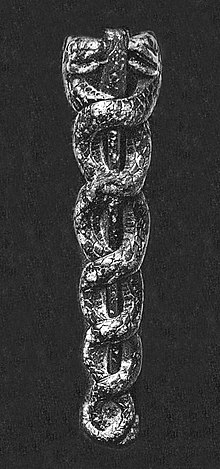Our website is made possible by displaying online advertisements to our visitors.
Please consider supporting us by disabling your ad blocker.
Snake worship

Snake worship is devotion to serpent deities. The tradition is nearly universal in the religions and mythologies of ancient cultures,[1] where snakes were seen as the holders of knowledge, strength, and renewal.[2]
- ^ Moorehead, W. G. (1885). "Universality of Serpent-Worship". The Old Testament Student. 4 (5): 205–210. doi:10.1086/469567. ISSN 0190-5945. JSTOR 3156392.
- ^ Smart, Ninian (10 November 2020) [26 July 1999]. "Polytheism: Animal and human forms". Encyclopædia Britannica. Edinburgh: Encyclopædia Britannica, Inc. Archived from the original on 11 November 2020. Retrieved 25 April 2021.
Just as plants can be seen as divine forces, so can types or species of animals. For instance, the cult of the snake is widespread and is especially important in the Indian tradition. The serpent is vital in the Hebrew Bible (Old Testament) story of Adam and Eve and appears in the Babylonian Epic of Gilgamesh as one who knows the secret of rejuvenation. The snake has a fertility aspect because of its possible phallic significance and because it lives in holes in the life-giving earth.
Previous Page Next Page


